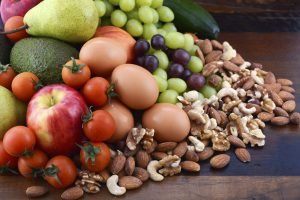The glycemic index (GI) is a system used to measure how quickly a particular food can raise blood sugar levels after consumption. For individuals with diabetes, whose condition stems from high blood sugar and the body’s inability to regulate it effectively, it’s recommended to consume foods with a low glycemic index.
Understanding the Glycemic Index
The glycemic index is scored from 0 to 100:
- Foods with a GI below 55 are considered low and are better for maintaining stable blood sugar levels.
- Foods with a GI above 70 are considered high and should be avoided or limited by diabetics.
However, it’s important to note that glycemic index is not the only factor to consider when choosing foods. Depending on an individual’s condition, it may also be necessary to avoid foods high in cholesterol, uric acid, or unhealthy fats. Additionally, excessive consumption of any food—regardless of its GI—can harm overall health. Moderation is key.

Foods High in Glycemic Index
Below is a list of common foods with a high glycemic index that individuals with diabetes should avoid or limit:
- White rice (plain rice). A staple in many diets, white rice has a high GI and can cause a rapid spike in blood sugar.
- Cornflakes and rice krispies. These breakfast cereals are often processed and high in carbohydrates.
- White bread. Regular white bread lacks fiber and causes blood sugar to rise quickly.
- Sweets and cakes. Desserts like cakes and other baked goods often contain refined sugars and flours.
- Maple syrup. While natural, it is high in sugar and has a high GI.
- Watermelon. Despite being a fruit, watermelon has a high GI and can impact blood sugar levels.
- Baked goods (e.g., bread, cakes, pies). The glycemic index of baked items depends on their ingredients, but many are high in GI due to refined carbohydrates.
Why Are Meats and Fish Not Included?
The glycemic index measures the sugar content in foods that provide carbohydrates. Since meats, fish, and other protein sources do not contain significant amounts of carbohydrates, they are not measured on the glycemic index. Nevertheless, moderation is still essential. Consuming appropriate portions of lean meat and avoiding excessive fat intake are crucial for overall health.
While diabetics should focus on low-GI foods, the ultimate goal is to maintain a balanced diet. Monitoring portions and avoiding overindulgence, even with low-GI foods, are just as important as understanding the glycemic index. For personalized advice, consult a healthcare professional or dietitian to develop a meal plan that suits your specific needs and health goals.
For more information, check out our List of Foods with a Low Glycemic Index to guide your choices toward better health.


